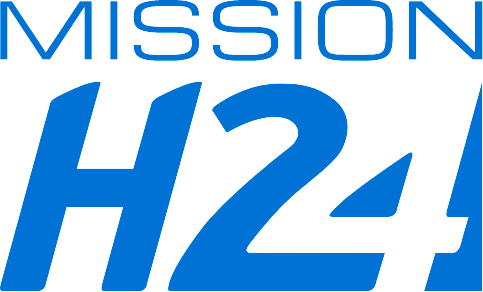Last December, the fuel cell, with Symbio, and the ACO’s hydrogen strategy were the topics discussed during a first meeting with students from Estaca (Ecole Supérieure des Techniques Aéronautiques et de Construction Automobile) in Saint Quentin en Yvelines and those from Laval and Bordeaux, connected via videoconference. Hydrogen and the energy transition are obviously of great interest to this generation in training. Following this first appreciated exchange, a new intervention has been scheduled at the beginning of February.
MissionH24, a collaborative program between the Automobile Club de l’Ouest and GreenGT for the promotion of hydrogen in competition and the creation of a category dedicated to hydrogen prototypes at the 24 Hours of Le Mans, was represented this time by Bernard Niclot, ACO Hydrogen consultant and Antoine Larroque, operations engineer and team manager of H24Racing. The program of the day? The hydrogen competition. How do you introduce a new technology in a race? How to establish the sporting rules? What are the technical rules? What are the stages encountered by a pioneering race team, composed of mechanics and exploratory engineers? How was this electric hydrogen prototype welcomed on the track by the public and by the competitors?
Mentalities have evolved.
As Bernard Niclot and Antoine Larroque made their presentations, reminding us that the H24 fuel cell prototype had taken part in four Michelin Le Mans Cup events and had finished each of them by improving its performance on the track, the audience showed its curiosity by asking many questions.
What is the potential and reliability of a fuel cell? Why this type of chassis and aerodynamics? What will be the refueling time ? Where does the H24 stand in terms of performance compared to the thermal competition? What are the risks with hydrogen? What certifications are required to work in this high voltage context? What obstacles have been encountered? What is the development program? What improvements have you planned? What is your best memory? Imola, our first race in 2022, will remain my greatest achievement even if I have won races in my career,” admitted Antoine Larroque. He added this anecdote: “On the races, I meet engineers from other teams with whom I went to school. At the beginning, they would tell me “I hope your machine won’t break down often and cause us yellow or red flags.” At the end of the weekend, they would sometimes come back and tell me, “so what did you do? I would reply that we had finished and learned. What about them? Their car could be on the board because it hadn’t finished the race. Mentalities have evolved. We have shown that hydrogen in racing works and has potential. We are still at the beginning and learning because our technology is far from being mature like the combustion engine. It’s exciting and virtuous for motorsport. Bernard Niclot emphasized this characteristic of racing and the 24 Hours of Le Mans, which celebrates its 100th anniversary in June: “Racing is a research laboratory for everyone’s mobility. Hydrogen is part of its legendary contributions from the race to the road.”


